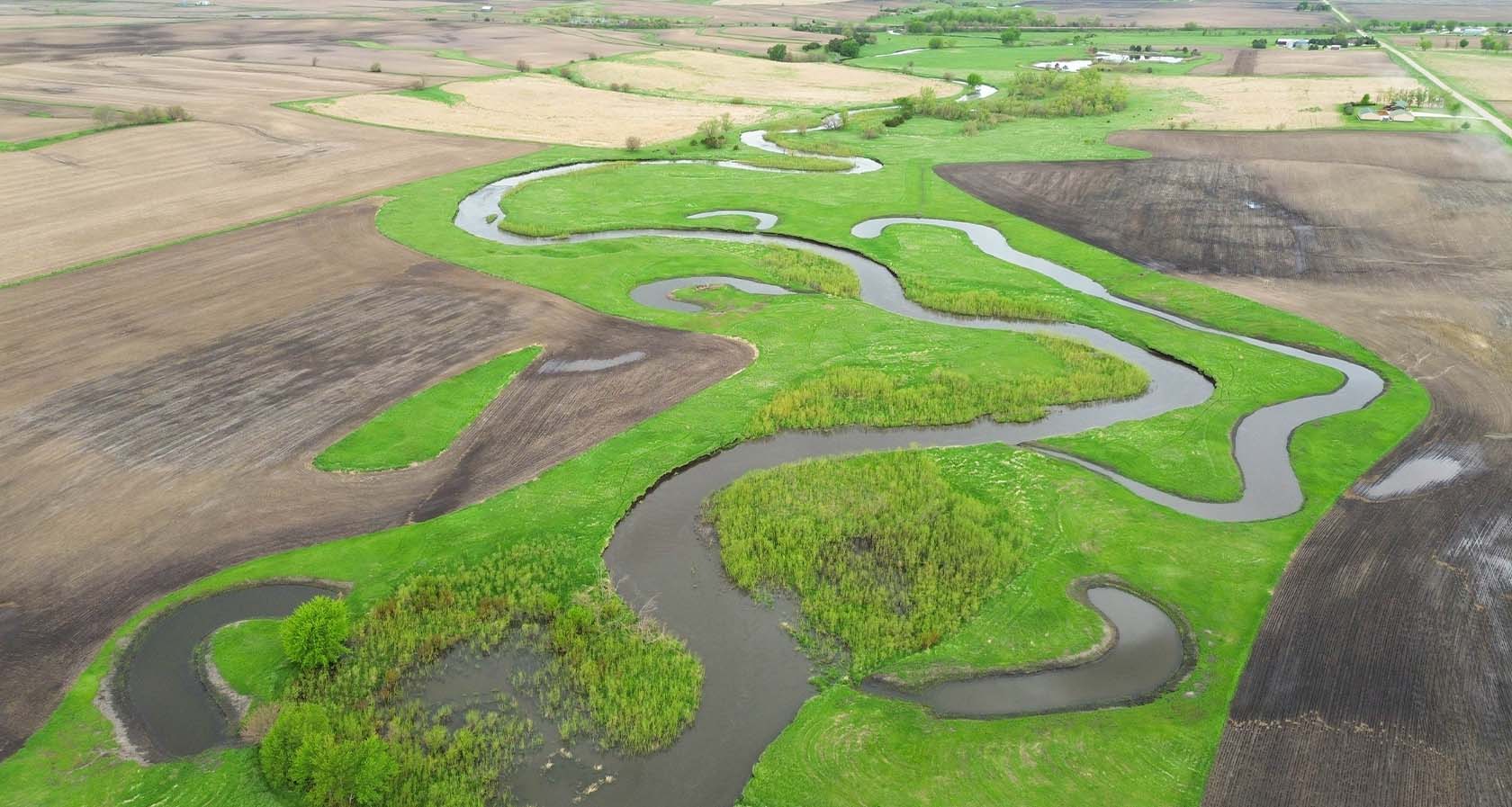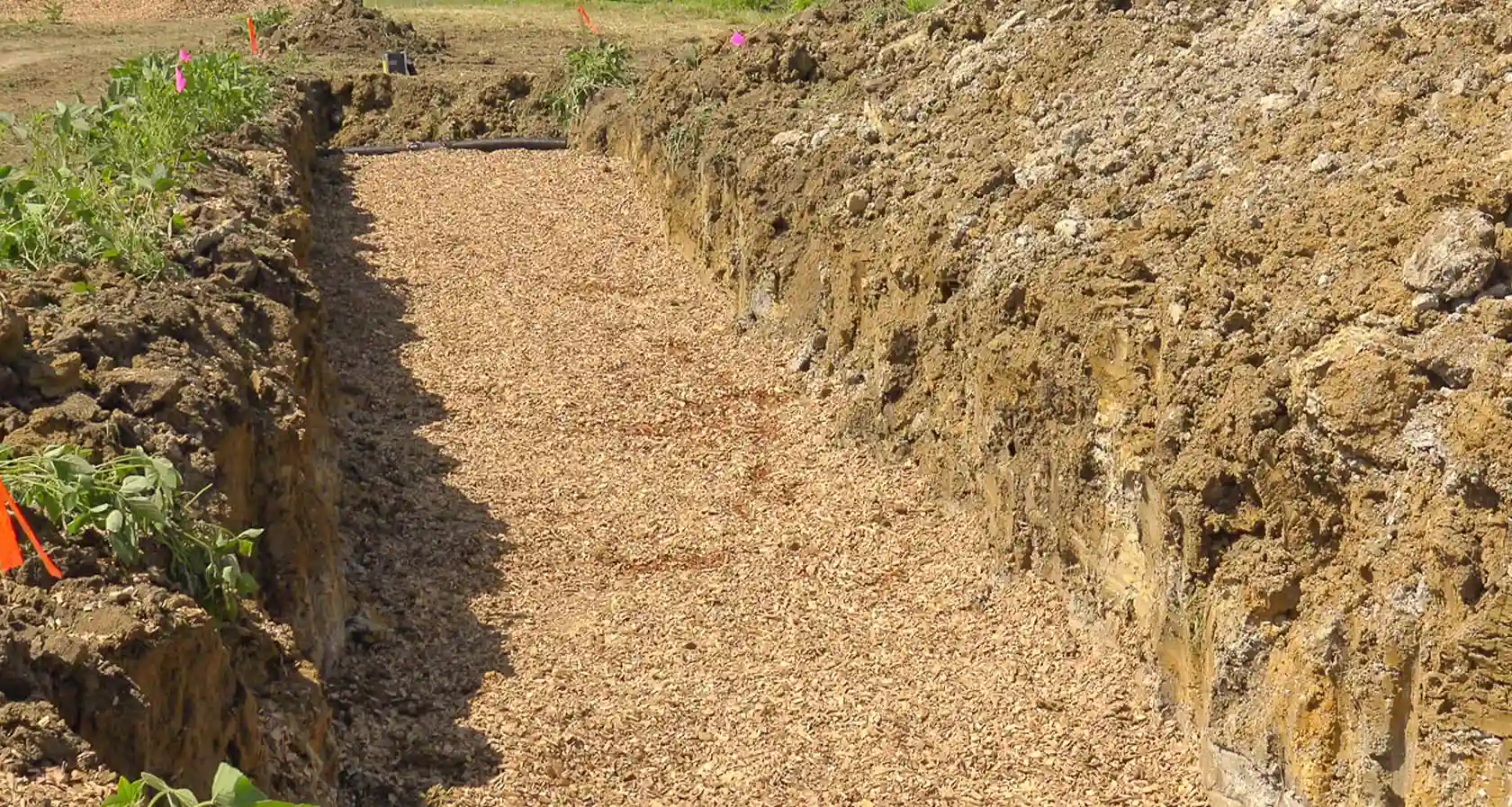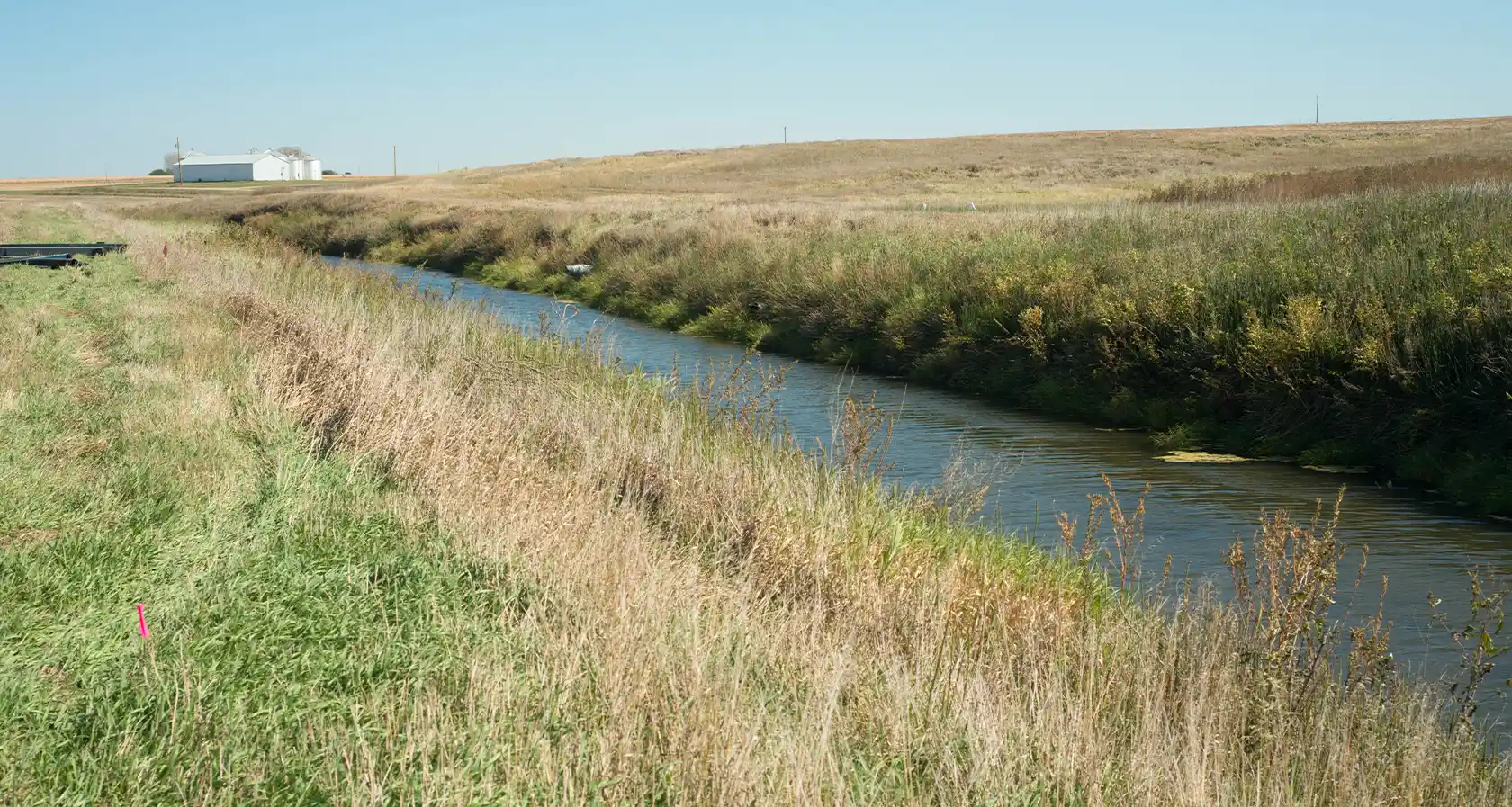
(Photo: Iowa Soybean Association)
Extending the lifespan of edge-of-field practices
August 5, 2025 | Alex Buseman
Key takeaways:
- Edge-of-field practices are vital for conservation.
- Site-specific actions extend lifespan.
- Ongoing monitoring and support are crucial.
Edge-of-field (EOF) practices are becoming increasingly common in Iowa's agricultural landscapes. Installed for a variety of conservation benefits, including improved water quality, habitat enhancement and flood mitigation, these practices play a critical role in sustainable land management.
One of the most frequently asked questions about EOF practices is: "How long do they last?" The most common answer? "It depends." While the exact lifespan of each practice can be difficult to predict, there are many steps land managers can take to help maximize their use.
Woodchip bioreactors
Woodchip bioreactors can remain effective for 10 years or more with proper site management. To maximize the bioreactors longevity, you can:
- Minimize traffic over the woodchip-filled chamber to reduce compaction risks
- Convert any surface tile intakes upstream of the bioreactor into blind inlets to reduce sedimentation
- Seasonally adjust stoplogs in the control structures to maximize saturated conditions and limit woodchip degradation
- Secure control structure lids and install rodent gates on tile outlets.

Saturated buffers
Saturated buffers can last more than 20 years with proper site maintenance. Because the vegetated buffer is where denitrification occurs, maintaining healthy vegetation is essential. Strategies to ensure long-term performance include:
- Controlling any woody or invasive plant species that will out-compete native grasses and obstruct tile flow
- Converting any surface tile intakes upstream of the saturated buffer into blind inlets to reduce sedimentation
- Securing control structure lids and installing rodent gates on tile outlets.

Oxbows
With careful land management, a restored oxbow can last decades or centuries. Since an oxbow restoration involves excavating sediment that was deposited in the oxbow scar over time, the key to extending an oxbow's longevity is to minimize sediment sources into the oxbow. To minimize sediment influx, you can:
- Establish and maintain native vegetation along the banks and upland area surrounding the oxbow
- Convert any surface tile intakes upstream of the oxbow into blind inlets to reduce sedimentation
- Stabilize the banks and connection channel to minimize erosion.
Iowa has more than 500 EOF practices that remove hundreds of thousands of pounds of nitrate and promote wildlife populations every year. It is important to maintain these practices to continue addressing each farmer's goals.
If you're seeing sediment buildup in your EOF practice, consider using a sewer jet to flush accumulated material from tile systems. For vegetative cover, pollinator seed mixes are widely available and excellent options for seeding oxbows and saturated buffers. Flagging any control structures to avoid collisions with equipment is also good practice.
Follow Iowa Soybean Association's YouTube channel to learn more about how to maintain edge-of-field practices.
If you have questions about edge-of-field practices, reach out to ISA's conservation services managers Alex Buseman, abuseman@iasoybeans.com and Brandon Iddings, biddings@iasoybeans.com.
Written by Alex Buseman.
Back